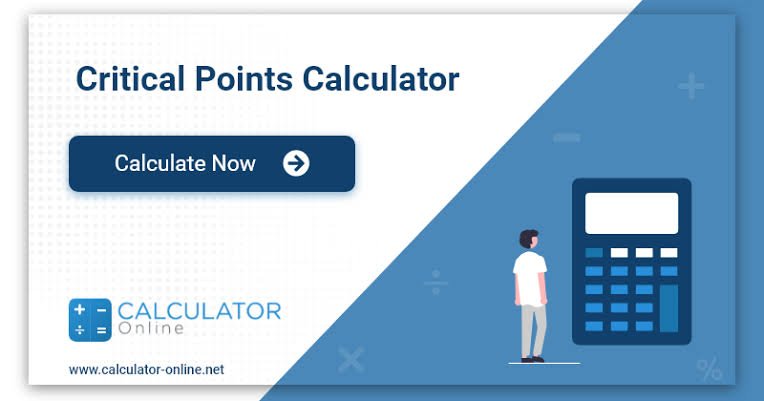Critical Number Calculator: Easily Find Critical Points
Introduction: What is a Critical Number Calculator?
Ever struggled with finding critical numbers in calculus? You’re not alone! Whether you’re a student tackling homework or a professional working with functions, a critical number calculator can save you time and effort.
A critical number (or critical point) of a function is where its derivative is zero or undefined. These points are crucial because they help determine maximums, minimums, and inflection points in a function.
Instead of manually calculating derivatives and solving equations, a critical number calculator does all the work in seconds! In this post, we’ll explore how this tool works, why it’s useful, and how you can use it to solve complex problems effortlessly.
How Does a Critical Number Calculator Work?
A critical number calculator follows a simple three-step process:
- Input the Function: Enter the function (e.g., f(x) = x² – 4x + 3) into the calculator.
- Compute the Derivative: The tool differentiates the function to find f'(x).
- Find Critical Numbers: It sets f'(x) = 0 or finds where f'(x) is undefined and solves for x.
For example, if you enter f(x) = x² – 4x + 3, the calculator will:
- Compute f'(x) = 2x – 4
- Solve 2x – 4 = 0, giving x = 2
So, x = 2 is a critical number!
Why Use a Critical Number Calculator?
A critical number calculator isn’t just a shortcut—it’s a game-changer! Here’s why:




Where Are Critical Numbers Used?
1. Finding Maximums & Minimums
Critical points help determine where a function peaks (maximum) or dips (minimum). This is useful in:
- Business: To maximize profit or minimize costs.
- Engineering: To find optimal design parameters.
2. Identifying Inflection Points
Some critical numbers indicate a change in concavity, helping in physics and economics to analyze trends.
3. Solving Real-World Problems
From building bridges to stock market predictions, critical points play a key role in optimization problems.
How to Use a Critical Number Calculator?
Here’s a simple guide:




Try it yourself—it’s super easy!
Common Mistakes When Finding Critical Numbers



Best Online Critical Number Calculators
Looking for the best tools? Here are some top-rated options:
- Symbolab – Step-by-step solutions with explanations.
- Wolfram Alpha – Great for complex functions.
- Desmos – Graph-based visualization for critical points.
Conclusion
A critical number calculator is an essential tool for anyone studying calculus. It simplifies derivative calculations, helps find critical points, and saves time on complex problems. Whether you’re a student, engineer, or researcher, this tool makes calculus more manageable.
So next time you need to find critical numbers, why struggle? Let a calculator do the work!
FAQs
1. What is a critical number in calculus?
A critical number is a value of x where the function’s derivative is zero or undefined. These points help identify maximums, minimums, and inflection points.
2. How do I manually find critical numbers?
- Find the derivative of the function.
- Set the derivative equal to zero or check where it’s undefined.
- Solve for x.
3. Can critical numbers be negative?
Yes! Critical numbers can be positive, negative, or zero, depending on the function.
4. Why are critical numbers important?
They help in optimization problems, determining where functions increase or decrease, and solving real-world problems in physics, economics, and engineering.
5. Do all functions have critical numbers?
No, some functions, like linear functions (e.g., f(x) = 2x + 3), don’t have critical numbers because their derivative is never zero or undefined.

